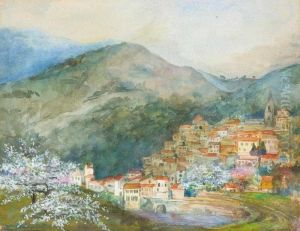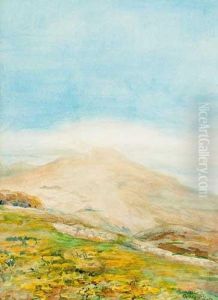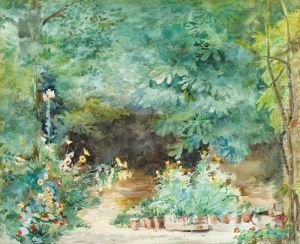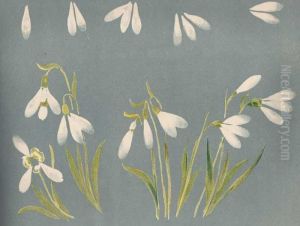Elizabeth Corbet-Yeats Paintings
Elizabeth Corbet Yeats, known as Lolly, was an innovative figure in the Irish Arts and Crafts movement and a key player in the development of twentieth-century Irish art and literature. Born on March 11, 1868, in England, she was part of the talented Yeats family, which included her brother William Butler Yeats, who would go on to become one of Ireland's most renowned poets and playwrights, and her other brother, Jack B. Yeats, who became a prominent painter.
Elizabeth studied art in London, where she developed her skills as a watercolorist and educator. She worked with her father, John Butler Yeats, a well-known portrait painter, and taught at the Technical Schools in Dublin, sharing her knowledge and passion for the arts with the younger generation.
In the 1890s, Elizabeth joined the Arts and Crafts movement, which was a reaction against the industrialization of the arts. She was particularly influenced by William Morris and the Pre-Raphaelite Brotherhood, whose emphasis on handcraftsmanship and aesthetic detail resonated with her artistic philosophy. In 1902, she moved to Dublin where she played a significant role in the Dun Emer Guild, an arts and crafts collective founded by Evelyn Gleeson, which aimed to promote Irish art and provide employment for women. Elizabeth ran the embroidery workshop, ensuring that traditional Irish designs were incorporated into modern creations.
In 1908, Elizabeth founded the Cuala Press, originally as an offshoot of the Dun Emer Guild before it became an independent entity. The press was one of the few of its time that was run by women, and it specialized in printing limited editions of books, often featuring the literary works of her brother W.B. Yeats, as well as other Irish writers. The Cuala Press was instrumental in the Irish Literary Revival, providing a platform for Irish voices and culture during a period when Ireland was seeking its national identity.
Elizabeth continued her work with the Cuala Press until her death on January 16, 1940, leaving behind a legacy of dedication to Irish arts and literature. Her work contributed to a renewed appreciation of Irish culture and craftsmanship, and her impact is still recognized in the fields of book arts and Irish studies.



